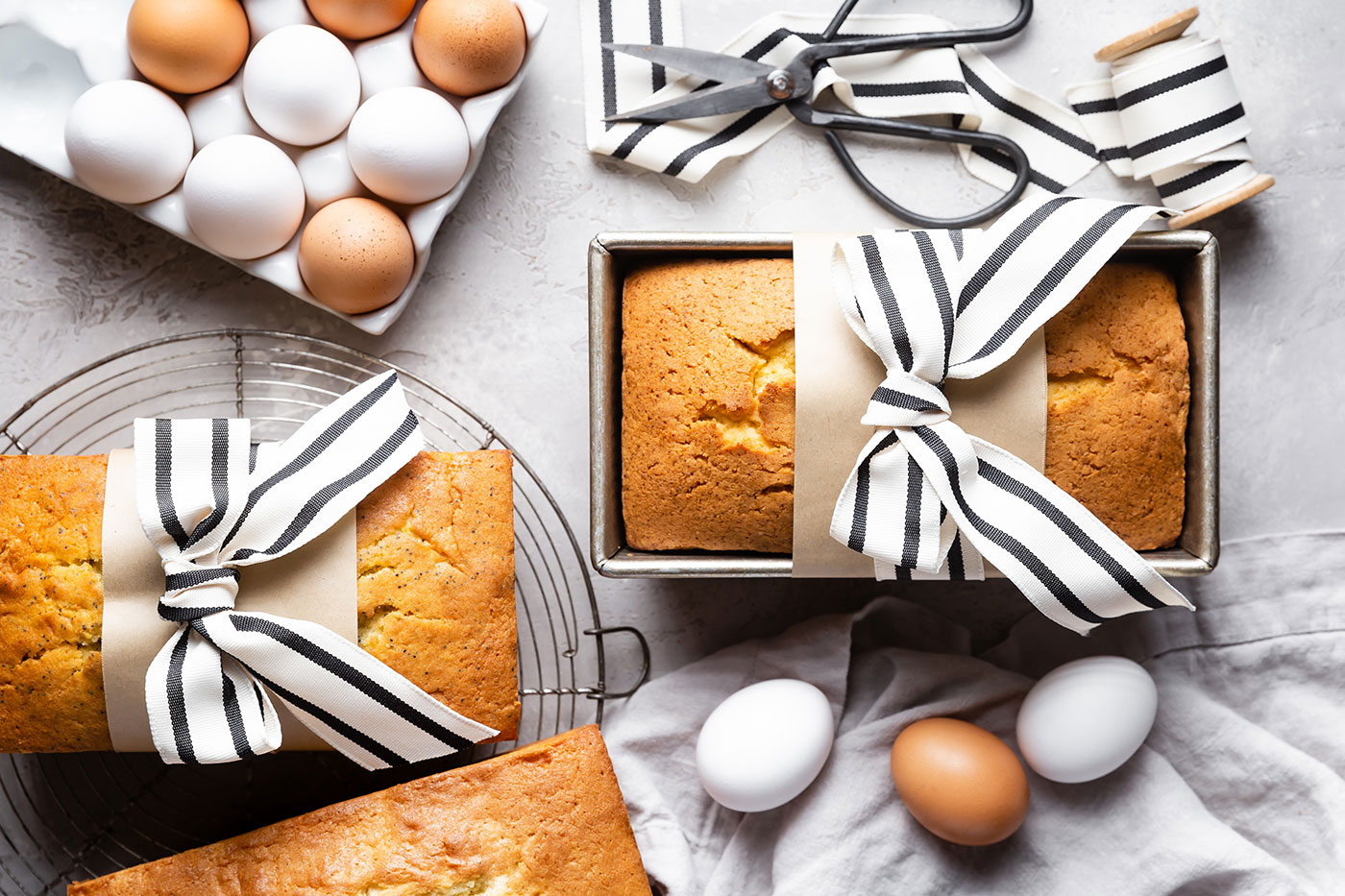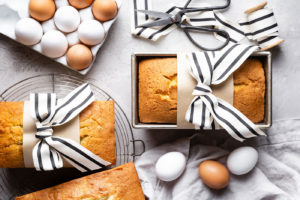Ingredients & Directions
- Vanilla Bean Pound Cake
Directions
Preheat oven to 325˚F. Spray a 9 x 5 baking pan with non-stick baking spray and line with parchment paper. Leave a 1 to 2-inch overhang beyond the edges of the pan for easy removal of the cake once baked.
In the bowl of a stand mixer fitted with the paddle attachment, beat the butter on medium high speed for 4 minutes. It will be light and creamy.
With the mixer on medium low speed, slowly add the sugar until fully incorporated. Mix for 30 seconds.
Add the eggs, followed by the egg yolks once at time. Mix thoroughly between additions and scrape down the sides of the bowl as needed.
Add the vanilla bean paste (or vanilla extract) and mix to combine.
In a separate bowl, whisk together the flour, cake flour, baking powder and salt.
Add the dry ingredients to the butter and egg mixture, alternating with the milk. Begin and end with the flour mixture. Beat on low speed only until just combined and a few streaks of flour remain. Do not over mix.
Transfer the batter to the prepared baking pan and bake for 50 to 55 minutes or until the top is golden brown and a toothpick inserted in the center of the cake comes out clean or with a few crumbs remaining.
Cool completely before adding glaze.
Ingredients
- 1 cup unsalted butter, room temperature
- 1 cup superfine granulated sugar
- 2 large eggs, room temperature
- 4 egg yolks, room temperature
- 1 1/2 tbsp. vanilla bean paste
- 1 cup all-purpose flour, spooned and leveled
- 1 cup cake flour, spooned and leveled
- 1 tsp. baking powder
- 1/2 tsp. salt
- 1/2 cup whole milk, room temperature
- Vanilla Bean Glaze (for Vanilla Bean Pound Cake)
Directions
For Vanilla Bean Glaze (Vanilla Bean Pound Cake): Mix all ingredients together with a whisk until smooth and pourable. If too thin, add more confectioners sugar. If too thick add more whole milk or cream. Drizzle over top of cooled cake.
Ingredients
- 1 1/2 cup confectioners sugar, sifted
- 4-5 tbsp. whole milk or heavy cream
- 1 tbsp. vanilla bean paste
- Orange Glaze (for Orange Poppy Seed Pound Cake)
Directions
Substitute 1 teaspoon vanilla extract for the vanilla bean paste. Add 1 ½ tablespoons orange zest and 2 tablespoons freshly squeeze orange juice after adding the vanilla. Stir in 1 ½ tablespoons of poppy seeds after adding the dry ingredients.
For Orange Glaze (Orange Poppy Seed Pound Cake): Mix all ingredients together with a whisk until smooth and pourable. If too thin, add more confectioners sugar. If too thick add more whole milk or orange juice. Drizzle over top of cooled cake.
Ingredients
- 1 1/2 cup confectioners sugar, sifted
- 2 tbsp. freshly squeezed orange juice
- 3 tbsp. whole milk
- 1 zest of an orange, optional
- Brown Sugar Maple Glaze (for Buttered Rum Pound Cake)
Directions
Brown the butter and then chill until firm. Remove from the refrigerator and allow to sit at room temperature for 20 minutes to soften slightly. Substitute 2 teaspoons vanilla extract for the vanilla bean paste. Reduce the milk to ¼ cup and add ¼ cup dark rum.
For Brown Sugar Maple Glaze (Buttered Rum Pound Cake): In a small saucepan over medium heat, whisk together the butter, brown sugar, maple syrup, heavy cream and salt. Stir occasionally as the butter melts. Continue stirring often as the mixture comes to a boil. Once boiling, stir for two minutes. The mixture will thicken slightly. Remove from the heat and add the vanilla extract. Allow to cool for 2 to 3 minutes and then pour the hot mixture over the sifted confectioners sugar. Stir until smooth and pourable. Drizzle over the top of cooled cake.
Ingredients
- 3 tbsp. unsalted butter
- 3 tbsp. light brown sugar, packed
- 3 tbsp. pure maple syrup
- 3 tbsp. heavy cream
- 1 tsp. vanilla
- 1 to 1 1/4 cup confectioners sugar, sifted
- 1 pinch of salt
To ensure food safety, eggs should be cooked until both the yolk and the white are firm. Consuming raw or undercooked eggs may increase your risk of foodborne illness, especially for those with certain medical conditions. For recipes that call for eggs that are raw or undercooked when the dish is served, use either pasteurized shell eggs that have been treated to destroy Salmonella, or use pasteurized egg products.






